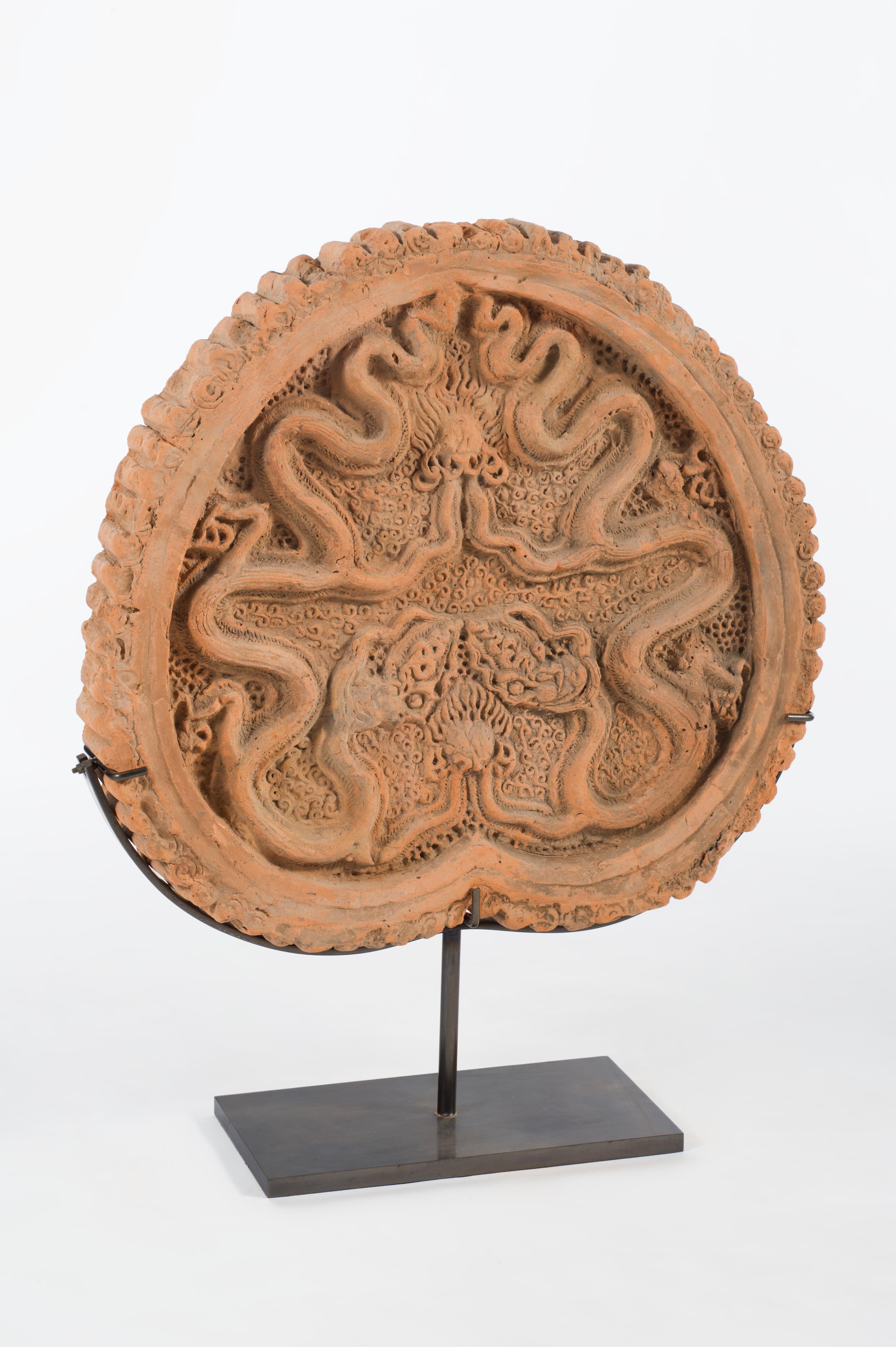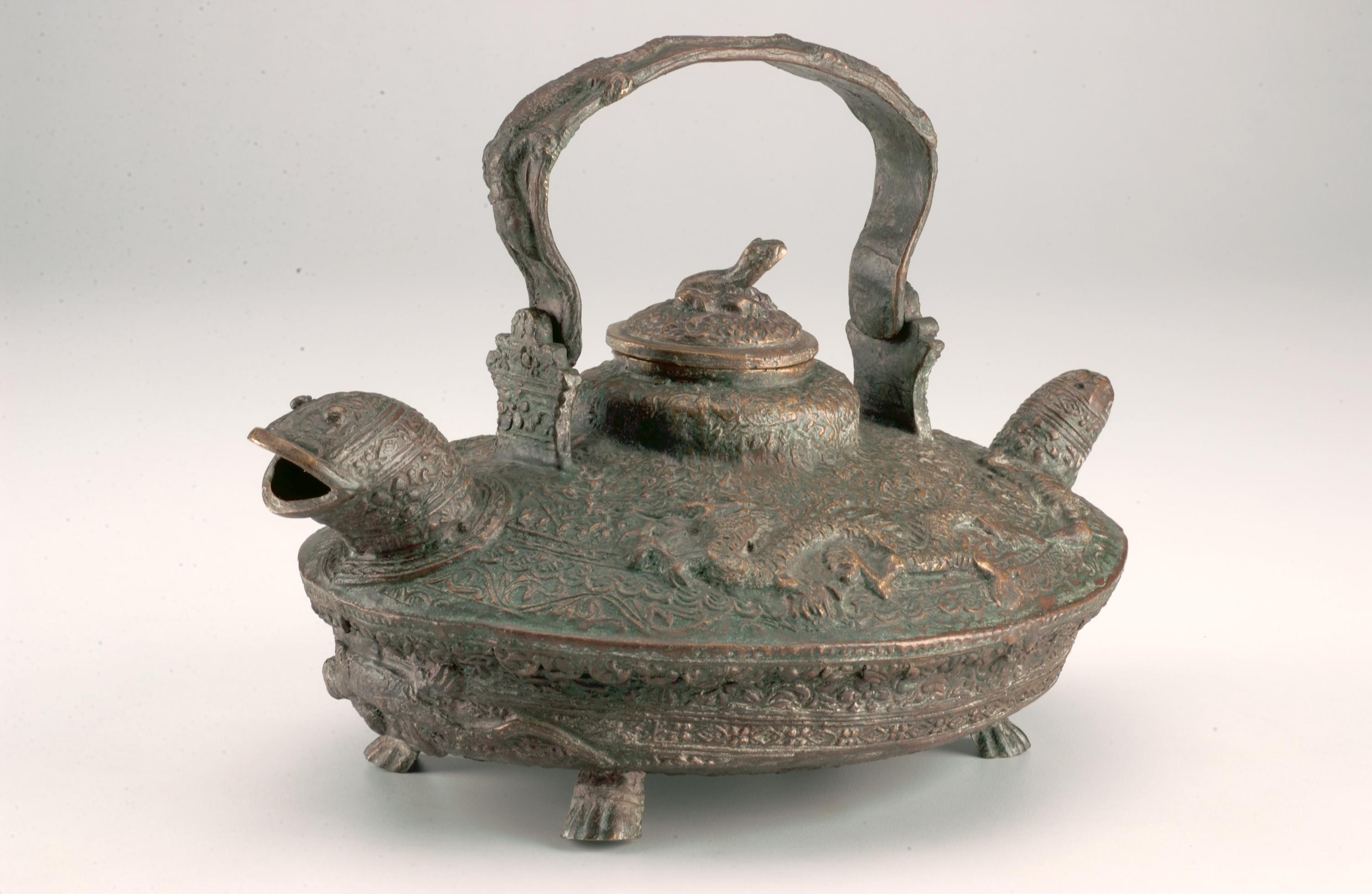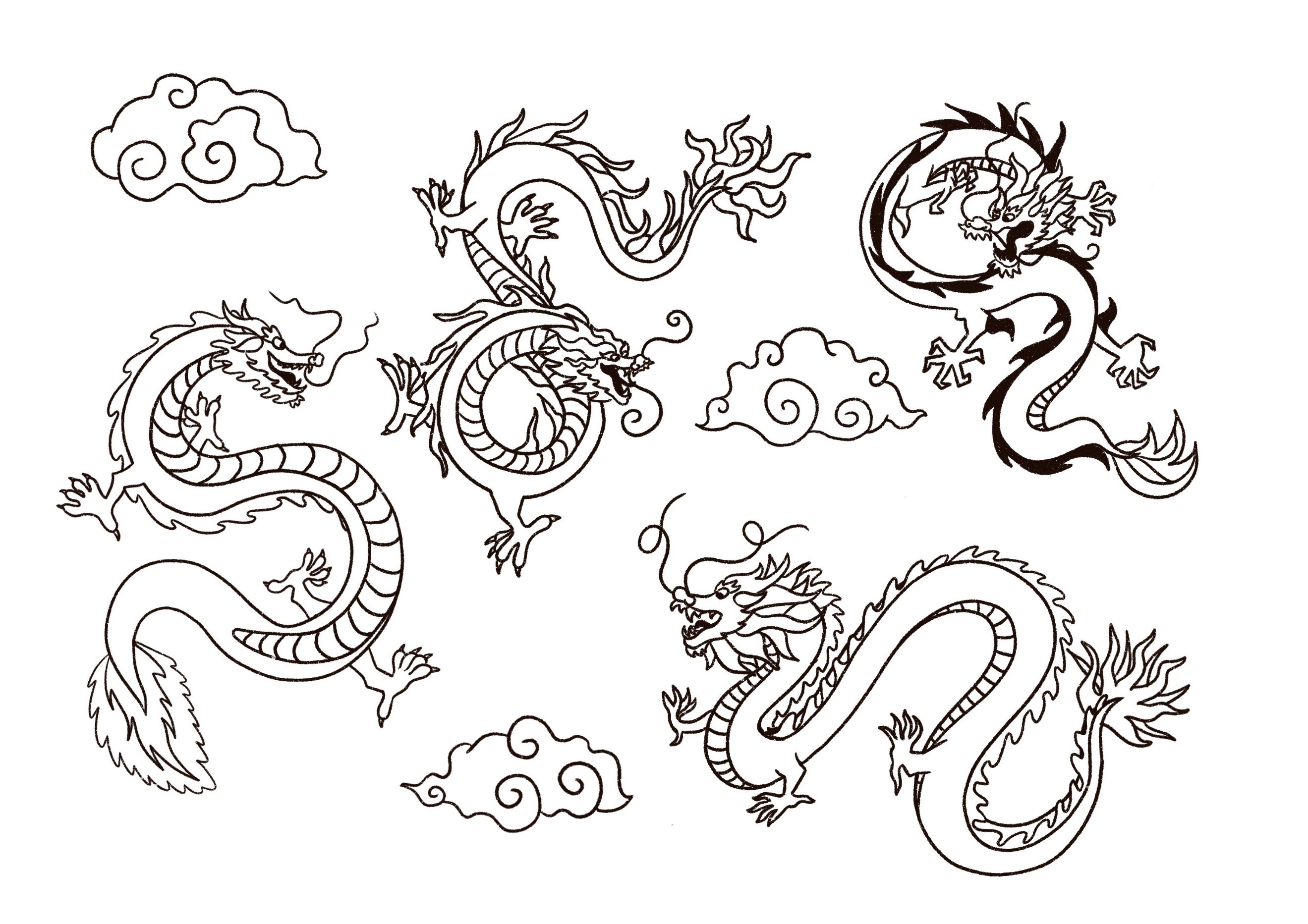OBJECTS IN ACM COLLECTION
Let’s take a look at some of our objects that feature these fantastic creatures.

|
Tile with dragons
Northern Vietnam
11th century (Ly dynasty)
Earthenware
2014-00577
|
Spy with your little eye two dragons flying amidst the clouds on this large tile! Dragons in motion are typically seen in art of the Ly dynasty in Vietnam. Dragons are important symbols in Southeast Asia.
During the Ly dynasty (1009–1225), temples and palaces frequented by the king often had dragons on them. A fun fact – the ancient royal capital of Vietnam (and current capital), Hanoi, was formerly known as Thang Long (literally “rising dragon”). In Hanoi, similar looking dragon motifs have been found on buildings.
Look for this large tile in our Ancestors and Rituals Gallery on Level 2.
.jpg?h=234&w=350) |
|
Set of 22 inksticks
China, Qing dynasty (1644–1911)
2009-02962
|
Do you recognise the creature on this box? It’s a Chinese dragon. In China, dragons represent power, strength, and good luck. In the past, inksticks were ground with water on an inkstone to make ink for calligraphy and writing.
Five-clawed dragons, like the one on this box, are a symbol of the emperor. For a long time in China, only the emperor and his immediate family could wear this symbol, and they were also the only ones who could wear the colour yellow. Anyone else caught wearing it would be in big trouble!
You can find this box of inksticks in our Scholars Gallery on Level 2.
 |
|
Zoomorphic kettle
Brunei, 19th century
Brass
XXXX-02920
|
This brass kettle was made in Brunei but has decorations inspired from Chinese art, such as the dragons. Can you spot other animals? Look at the lid of the kettle, the handle, and the spout. In brassware made in Brunei, animals, including dragons, lizards, frogs, fish, and birds, are often featured, as some of them are believed to bring good luck, or bring more children to the family.
Kettles were and are still used today as water containers in weddings to serve water for drinking and for the washing hands and feet. In the past, Brunei was well-known for producing brassware. How do you think people from Brunei came to know of auspicious animals in Chinese culture?
You can find this kettle in our Islamic Art Gallery on Level 2.
.jpg?h=234&w=350) |
|
|
Pair of mounted blue jars
Porcelain: China, around 1736–45
Gilded bronze mounts: France, around 1745—49
2014-00709
|
Do these dragons look a little different from the ones above? That’s because these dragons were made in Europe – specifically, France. Do you know of any animals that look different depending on which country they live in, or who drew them? Sometimes when making art, local people use their own preferred ways of drawing or sculpting animal and mythical creature designs.
These jars are decorated with a deep blue glaze, a type of porcelain decoration used in China during the reign of Qianlong emperor, more than 200 years ago. That's why we know they were made in China during that time. After they were made, they were exported to France, where someone added the gold parts, called "mounts", with the dragons at the top. Find them in our Maritime Trade Gallery on Level 1.
COLOUR
Click here to download our colouring sheet, inspired by the Legend of the Four Dragons. Tag us @ACM_SG and #LearningatACM to get it featured.

EXPLORE
Head to NHB’s one-stop heritage portal Roots.sg to read more about the objects featured:
Large tile with dragons
Set of 22 inksticks
Zoomorphic kettle
A pair of mounted blue jars
Find out more about the Dragon Boat Festival on the same portal here too.
Want more of these resources? Come back to learn new things every month.
Missed a monthly post? Not to worry, we keep past topics here for you.
What else would you like to learn about? Tell us here.
There’s more!
Check out other videos and download e-resources inspired by the objects in ACM’s collection.